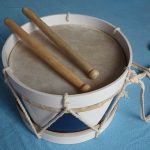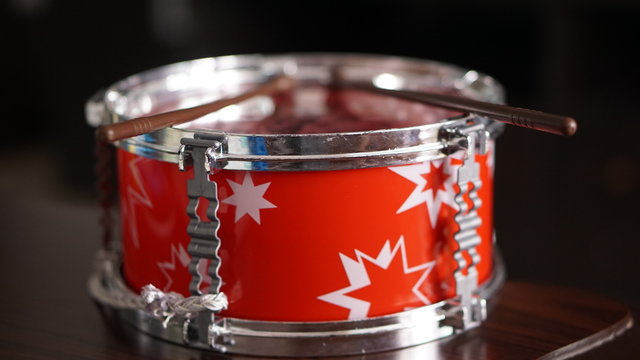 Sam was eight years old with a diagnosis of Down’s syndrome. He attended a local primary school and received daily help from his support assistant within the classroom. Sam’s limited understanding of language, meant that he expressed himself using single words only i.e. names of familiar people, objects and actions. To help him communicate, Sam used the Makaton Signs and Symbols Communication System which uses speech with signs (gestures) and symbols (pictures) to aid communication. Sam’s mother had asked for my help because Sam’s social interaction wasn’t improving. She also mentioned that Sam was now refusing to walk along an area of path on his way to school, where he had previously fallen down.
Sam was eight years old with a diagnosis of Down’s syndrome. He attended a local primary school and received daily help from his support assistant within the classroom. Sam’s limited understanding of language, meant that he expressed himself using single words only i.e. names of familiar people, objects and actions. To help him communicate, Sam used the Makaton Signs and Symbols Communication System which uses speech with signs (gestures) and symbols (pictures) to aid communication. Sam’s mother had asked for my help because Sam’s social interaction wasn’t improving. She also mentioned that Sam was now refusing to walk along an area of path on his way to school, where he had previously fallen down.
Sam’s father was unwell and often at home, battling depression. Sam’s mother had given birth to Sam in her early forties. The daily demands of caring for a child with special needs left her physically exhausted. Although a trained dancer, she felt she lacked any joy in her life having also recently lost her own mother to a terminal illness. In an effort to control Sam’s behaviour, No’, ‘Stop’ and ‘Don’t’, were words she regularly used before picking up items that he repeatedly threw to the floor.
The innovative work of the Living Memory Research Trust is based upon the belief in the continuity of the soul and its journey through lives. A colleague, a consultant astrologer and numerologist focuses upon medical astrology (Iatromathematics) and the psychological and spiritual aspects of the soul journey. This innovative work provides insights into current relationship issues related to previous experience of shared lives together. I have found this to be invaluable guidance, when searching for the optimum approach to specialised therapy. In this instance, I requested a chart for both Sam and his mother.
Joint Astrological Chart
Sam’s astrological chart indicated that he and his mother were opposites in many respects and could therefore learn much from each other. Each had the ability to ‘free the other’s spirit.’ The chart indicated that Sam’s mother would be able to teach her son to be practical and to take responsibility for his physical needs. He, in turn, would be able to help her to relax and ‘lighten up’ , enabling his mother to find some joy in life. She had feelings of self-doubt which limited her ability to achieve, putting duty before pleasure. Sam, on the other hand, was an ‘optimist with an innate faith in life’. He ‘needed adventure with a desire to soar, intellectually and spiritually.’ Sam’s ‘light touch’ could stop his mother from worrying. His mother’s realism could temper Sam’s enthusiasm. However, there was a danger that his mother’s seriousness and inflexibility would limit Sam’s ability to progress. To avoid this happening, their joint chart indicated that they were required to work creatively together.
Information in their joint chart indicated that Sam would respond positively to singing, jungle images and drums. These activities could easily be incorporated into Sam’s play sessions.
Therapy
Therapy for Sam was partly focused on encouraging his mother to use positive language e.g. to invite Sam to do what she wanted him to do rather than to use negative words such as ‘don’t’, ’stop’ and ‘no’. For example, to first gain Sam’s attention by saying his name. Then, when he is looking at her , she was to make her request e.g. ‘Sam, put the cup on the table’ rather than ‘don’t throw the cup on the floor’ and ‘Sam, please walk’ instead of shouting ’Stop running.’
To inhibit Sam’s habit of throwing objects on the floor, his mother was advised to put her hand over Sam’s hand and then together they would pick up whatever he had thrown on the floor, ignoring his resistance. By repeating this ‘hand over hand’ action each time he threw something, I assured her that Sam would eventually tire of making extra work for himself and would stop throwing things. It was also a demonstration for him that his mother was in charge not he. This method proved very effective.
We tackled Sam’s remembered fear of a previous fall by distracting him. As he and his mother set off for school, his mother sang action songs and nursery rhymes as he approached the area that caused him concern. This encouraged him to keep moving and before long, he had replaced the trauma incident with a happy memory of the sing-along- journey to school.
Specific vocal tones based on the Rainbow Chakra Toning System were practised at home and in our play sessions. When Sam used his voice in this way to make sounds rather than words, it improved his overall confidence. The action of toning impacts positively on cellular processes and on the neurological system. Daily practice improved Sam’s ability to process his thoughts and express himself through words rather than gestures.
The sacral tone /O/ (as in home) was used to strengthen Sam’s voice and stimulate left brain neurological connections. This improved social interaction and communication and he began to relate to other children in the classroom. Toning is an ancient and powerful method of healing with the voice. It provides a means of creative expression through simple vocal techniques to create specific sounds. Focused toning can alter the molecular structure of our bodies , triggering our own self-healing mechanism. Each tone within this toning system corresponds to a specific chakra (energy centre) and a specific colour, creating a rainbow of colour and sound to strengthen and balance the auric field. The sacral tone resonates with the vibratory frequency of the colour orange; together Sam and I made an orange tent from a clothes airer covered in orange material for Sam to sit under while making his tone.
Singing, drumming and finding jungle images were incorporated into our play session and encouraged at home. Sam’s mother responded well to the suggestion that she should dance to Sam’s drumming. As she danced to his drum beat, Sam was shown the positive impact of his actions. Their relationship improved as they laughed together and this empowered both mother and son and helped to redress the balance of control in their relationship.
The Emerald Alignment a self help method of aligning the subtle energy field was practised by Sam’s mother at home in the morning and evening, this improved her sleep, enabling her to cope with the stresses of daily life.
 The Emerald Alignment for Children also played an important role at the beginning and end of Sam’s play sessions, I hung a swathe of emerald green material from the ceiling as a visual prompt. Before he was taken through the emerald alignment process, Sam always chose to sit on the emerald green material where it fell in a pool of colour on the floor.
The Emerald Alignment for Children also played an important role at the beginning and end of Sam’s play sessions, I hung a swathe of emerald green material from the ceiling as a visual prompt. Before he was taken through the emerald alignment process, Sam always chose to sit on the emerald green material where it fell in a pool of colour on the floor.
As a result of these sessions, Sam became more aware of his surroundings . Our turn taking activities had a positive impact on his school day. Sam’s teacher reported that he was beginning to share and cooperate in school activities . His mother had pulled back from anticipating her son’s daily needs and he was now dressing and going to the toilet by himself. Regularly drumming to a rhythm improved Sam’s ability to listen and his ability to identify specific speech sounds when spoken to. This in turn improved the clarity of his own speech because we can only reproduce what we hear.
Sadly, Sam’s parents moved from the area and we were unable to continue our sessions but this work was instrumental in illustrating for me the value of medical astrology in assisting the therapeutic process.
Information on the Rainbow Chakra Tones can be found on the Living Memory Research Trust website
Further information relating to therapy with children is available on Jennifer’s pages on the Living Memory Research website
Jennifer can be contacted at Email: jennifer.warters@lightvoice.org.uk


